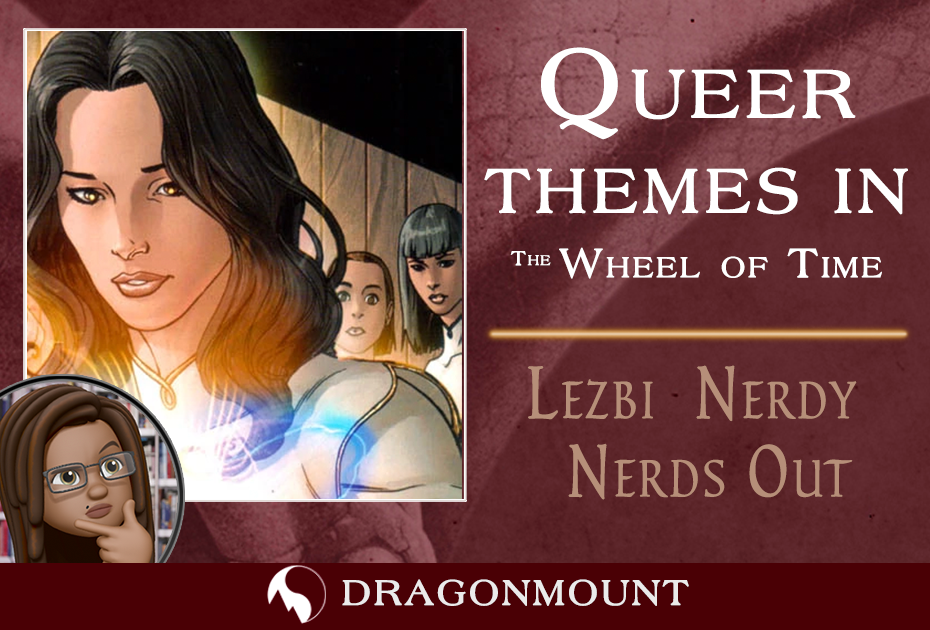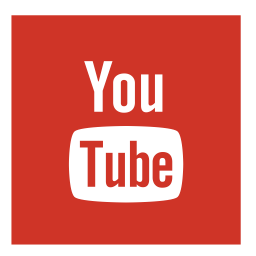
Recently, as has become tradition, along with the Wednesday Wheel of Time TV show teaser, Rafe Judkins answered some fan questions about the show. In amongst his answers was one that, while I fully anticipated his answer, I was still pleased to see. A fan asked him if there would be LGBT representation in the show, and in response Rafe said “there is rep in the books and the show”, and alongside his response, he included both the gay flag emoji and the trans flag emoji.
This was a very heartening response, in particular the inclusion of the trans flag. As some of you may know if you watch my videos, I have long said that I think the show will need to include trans characters, not only because more diversity that reflects reality will only serve to deepen the world that Robert Jordan created, but I think the very nature of the magic system practically begs the question of where and how trans people fit into this world.
But when I read Rafe’s response, I couldn’t help but think about the queer representation that exists in the book and how… lacking it is. And I mean that more than numerically, although simply statistically speaking, the number of characters that are canonically queer is way lower than they should be if the story is actually reflecting reality. And it is noteworthy that of the queer characters that Robert Jordan himself included, not a single male queer character exists. The gay male characters were written in Brandon Sanderson’s final three books of the series.
When people talk about queer characters in the books, the term “pillow friends” gets mentioned quite a bit. But, for the most part, the pillow friends that Robert Jordan wrote about were not particularly queer. Their time of having romantic/sexual relationships with people of the same gender (again, exclusively between women) does not read to me as truly queer. It reads to me as the “just a phase” that often gets thrown in the faces of queer people when we come out. These women have sexual encounters with each other during times when men are not available to them, but when they are once again able to interact with men, they naturally move away from their relationships with women to the more ‘mature’ relationships with the opposite sex.
In fact, it is rather explicitly hinted at in the narrative, that these ‘pillow friend’ relationships are an expression of an immature sexuality – something I can tell you from firsthand experience is a real thing that used to be said (perhaps still is). That everyone goes through a homosexual phase of attraction, but you’re supposed to mature out of that. Gay people are supposedly stuck in that immaturity. I do not know if Robert Jordan actually believed it, but he did include this very odd and inaccurate narrative about queer people in his books.
And this is not even speaking of the women who, in canon, are shown to be exclusively attracted to other women. Recently, when discussing these women with a friend, I described it as “his representation of lesbians reads like a man who has heard tell of lesbians via legend and myth”, an analogy I was quite proud of, given the themes of myth and legend that run through these books. The lesbians in these books are angry, cruel women who hate men and/or want to be just like men. Their desires seem more focused on what they don’t like than what they like… it is lesbianism defined by its relationship to men, and how it is perceived by men. I do not expect every queer woman in these books to be a paragon of virtue, far from it, but when every example of a specific group of people is painted with the same brush, it ceases to be a personality trait, and instead is a stereotype that should be examined.
And of course, this isn’t even touching on the “trans representation” that exists within the books. I put that in quotes because whenever I bring this topic up, the character Halima is mentioned, but I feel that Halima is evidence that Robert Jordan was…ill-informed, to put it mildly, on the subject of the transgender experience. I, myself, do not think I am an expert by any means, but it is easy to see how Halima is almost a personification of the very 90s (and probably decades earlier, but I remember this from the 90s) fear that straight men had that transgender women were going to somehow ‘trick’ them. Halima’s whole plotline revolves around deception, and they revel in the knowledge that they are fooling people, despite the fact that being in a female body is a punishment for them. Additionally, many things in Halima’s narrative indicate that Robert Jordan appeared to think he was describing the experience of a trans woman. While there are many trans people who reject the ‘born into the wrong body’ narrative, the experience of being a female soul forced into a male body would be more akin to the experience of many trans men, not trans women; something I know from multiple conversations on this topic is a point of confusion among fans. If, in fact, Halima was Robert Jordan’s attempt at trans inclusion, then, much like the lesbian representation, Halima is a character created by someone who seemed to not understand the group they were attempting to represent.
All of this to say that yes, there is queer representation in the books, but I am hoping for more from the show.
But, beyond the queer characters in the books, I think that there are queer themes layered throughout the story. I don’t think it is possible to know if these themes and moments are intentional, but I know that as a queer person reading this series, there are moments that likely resonate with me differently than they would a straight person.
The first of these moments for me comes in Eye of the World. Our party has been separated by Mashadar at Shadar Logoth, and Nynaeve has found herself joining with Moiraine and Lan. And at this moment, Moiraine reveals that Nynaeve can channel. And here we get to see Nynaeve stripped of the mask that she wears to protect herself, and she is vulnerable for the first time. Moiraine has exposed this truth that Nynaeve desperately wants to not be true.
That desperation that Nynaeve feels, the way she wrestles with it, sees the obvious truth in it, all while hating it and trying to deny it. That moment feels so familiar to me. And when she quietly asks Moiraine to not tell anyone, my heart breaks for her. The shame that Nynaeve feels in that moment, I know that feeling, I wore that feeling for so much of my life.
And then there is Egwene. It never occurred to me to read a queer theme into Egwene’s storyline until I had a chance to interview Enn and Matt from the Cool Story Podcast (A Wheel of Time New Reader podcast), and Enn spoke of reading queerness in Egwene. Egwene is, to me, the inverse of Nynaeve. Nynaeve reflects my early journey, I was a person with a secret that was so deep, I sometimes was able to hide it from myself, and when it came to the surface, I tried so hard to suppress it. I was prepared to live my entire life denying this part of who I was, or at least I thought I was prepared to do that.
Egwene, on the other hand, her story reflects the story of the brave kids that know and accept who they are, and know that if people don’t accept them, that’s their problem. Egwene does not know that she can channel until Moiraine reveals it to her, but from the moment we meet her, she knows that the Two Rivers is not enough for her, that she is destined for more. It is the story of so many gay kids growing up in places where they not accepted, and they are eager to strike out on their own, move to ‘the big city’, where they can finally be their full and complete selves and come into their own.
In that same interview; Matt, the other host of the Cool Story Podcast, mentioned seeing queerness in Perrin’s storyline, something that feels so obvious to me now that I can’t believe I didn’t see it before. One of the most frustrating things, to me, in Perrin’s character arc, is his indecisiveness when it comes to his relationship with the wolves. He will accept them, and then block them out, and then embrace them, and then suppress them. As a reader, I find myself so frustrated that he can’t commit to moving forward with this part of his identity. But when Matt brought this up, I couldn’t help but look back on my own journey with accepting myself as a gay woman, and the multiple times I came out and then went back into the closet. I imagine that if anyone had been reading my story as a narrative, they would have been equally frustrated.
Now, when I think of this aspect of Perrin’s character arc, I identify with it. It is realistic. There are beats in there that are, once again, depressingly familiar. When Perrin “comes out” to Ingtar, he expects rejection, or even to be accused of being a darkfriend. Ingtar’s reaction is not rejection, but it is not full acceptance either. He urges Perrin to pretend to be something other than his true self, because the others will not understand. This is, almost verbatim, what I heard from several members of my family when I began to come out to them.
There is also, for me, one of the biggest ways I see queerness in the story – the ability to channel itself. Often, when talked about, the ability to channel is said to be akin to an addiction. I do think that this is an accurate analogy for channeling as described in the books, but I personally see it as more akin to sexuality. I do not mean that in a salacious way at all, I am not likening channeling to the act of sex, but instead to sexuality as a part of one’s identity.
Part of this, I do feel, is very deliberate in the narrative. The way the ‘spark’ is discussed as happening earlier in women than men, the steady growth rate of ability in women versus the sporadic nature of the increase in strength in the power with men, it is an obvious parallel to physical puberty. However, it is more than this parallel that strikes me with the ability to channel. In fact, for me the aspect of channeling that most resembles sexuality is the fact that once you start channeling, you will continue to channel, it is inevitable. This feels like a reflection of the truth that you cannot deny who you are. As I mentioned previously, I came out multiple times before finally fully embracing who I was. Each time I went back in the closet, I was determined to be straight. I was certain that I could do it. But it was impossible. Experiencing even the briefest moments of being honest with myself and others made living in the closet impossible.
There is also the way that people react to being gentled or stilled - they lose their will to live. Again, this is a feeling I am well acquainted with. When something so central to who we are as people is being buried, and you are expending so much energy lying to yourself and everyone around you, it is exhausting, and it can make it hard to see any beauty in the world. So, when I read these books, and see Logain, walking around the Tower grounds, dejected and empty, I understand what he is feeling and it resonates with me.
And finally, there is Rand. I think it is impossible to talk about queer themes in these books and ignore this aspect of his storyline. Rand, much like Perrin, has a part of himself that he wants to reject and hide. But, unlike Perrin, Rand has no choice. He cannot reject his ability to channel because he has ‘the spark’, and he cannot hide because he is the Dragon Reborn. And he knows that men like him hurt and kill people around them, and if they aren’t stopped, they rot to death. It is a horrible fate.
This aspect of his story very much mirrors the experience of living through the AIDS epidemic, the stigma that people living with HIV/AIDS had at the time - and in many places still do. The fear that just by existing, these men would cause harm to those around them, and eventually die in a very undignified way. And unlike the previous moments or story arcs I mentioned, I feel fairly confident that this one is intentional. Given when Robert Jordan started writing this series, the fact that the taint and its effects are very gender specific, and knowing that, at the time HIV/AIDS was thought to be a gay male disease, the parallel is almost too perfect to be accidental.
Earlier, I criticized Robert Jordan’s portrayal of queer characters, but I do very much believe that his missteps were borne out of ignorance rather than malice. I always want to acknowledge his good intent, and I do very much believe his intent was good. And in this part of Rand’s story, and the story of male channelers in the Wheel of Time, I see this good intent. I see Robert Jordan exploring the journey of a character who, through no fault of their own, finds themselves “infected” with something that everyone fears, and no one understands. No one can help him, many won’t even try, and he has to figure it out on his own. And in light of this interpretation of this aspect of Rand’s story, I think it is beautiful and hopeful that part of his journey includes the cleansing of the taint, and the ultimate acceptance of men who can channel.
So, while the queer representation in the books may have fallen short for me, these are the moments where I was able to read queerness into this series and find my story and the story of those like me in this world that I love.
Are there moments for you that resonate in a way that may not be common among the fandom? Leave a comment and let me know!
-Dragonmount-Banner-Ads-1200x280.gif.ed90097d91aa5c65a5c17fab3b59c6f2.gif)
-Dragonmount-Banner-Ads-728x90.gif.a2f99d762ad611c51fbffc8b25a4efb4.gif)
-Dragonmount-Banner-Ads-320x100.gif.a233f9b759ce2a0c82ee7b9e890e85dd.gif)
.thumb.png.e99e0f7d32d873e59a8e6a2f44216614.png)
.thumb.png.263612298537d671946b991388962dbf.png)
.thumb.png.2e75f8a1de60054e8e2089531aa3c4ae.png)









.jpg.b7a8ed0c6c6b6db6eaa89411a06d40a5.jpg)
.gif.42a259ec4461f639cc9bc78adbc6ff0e.gif)
Recommended Comments
Join the conversation
You can post now and register later. If you have an account, sign in now to post with your account.
Note: Your post will require moderator approval before it will be visible.